Haegue Yang’s fantastic beasts descend on Tate St Ives
The South Korean artist dazzles Tate St Ives visitors with otherworldly robotic creatures and tributes to 20th century art greats in a show of perfect chaos

St Ives, the charming Cornish port town and artist’s mecca has just experienced an invasion. This year, it’s not the herds of art-hunting, sea-seeking tourists, but creatures of an altogether more otherworldly variety, conceived by Berlin-based South Korean artist Haegue Yang.
In her largest exhibition in the UK to date, ‘Strange Attractors’, Yang transforms both the new top-lit gallery in the Tate’s new building and the sea-facing gallery in the original building into her new world. Through new and recent work in a broad range of media, Yang explores ‘geometry, abstraction and the aftermath of modernism’ with a heady dose of playfulness and puzzlement.
For Yang, the starting point was mathematics: complex patterns of behaviour in chaotic natural systems. ‘The exhibition considers humankind’s universal venture to live within chaos and unpredictability,’ Yang explains. Here, seemingly disparate ingredients make for a sapid repast – from pagan cultures and their seasonal rituals to historic (and imaginary) encounters with artists such as Li Yuan-chia, and former St Ives star residents Naum Gabo and Barbara Hepworth.

Installation view of 'Haegue Yang: Strange Attractors' at Tate St Ives, 2020.
If Yang’s theatrical Reflected Metallic Cubist Dancing Mask doesn’t leave your jaw a little closer to the floor, Sonic Intermediates – Three Differential Equations certainly might. A trio of artificial straw-clad robotic creatures wheel around on casters in what looks like a collision of Star Wars, a pagan ritual and a Haas Brothers’ creation. Whether they’re dancing, preparing for combat, or engaging in some form of elaborate courtship ritual is anyone’s guess.
In this piece, Yang doesn’t just allude to her artistic influences, she acknowledges them tête-à-tête, which allows for something of a game of who’s who within each work. One takes Hepworth’s ‘pierced forms’ to a new dimension. Another, pivoting on its central axis, seemingly in giddy excitement, is surely a reference to the kinetic tendencies of Naum Gabo (whose Tate St Ives exhibition preceded Yang’s). A third creature, slightly stumpier than its comrades, holds a broom, echoing the self-portraits of Li Yuan-chia (the Chinese artist Yang devotes the entire opening of her exhibition to), themes of domesticity or perhaps a timely nod to looming Halloween festivities. ‘The artists are finally brought together in this sculptural trio where visitors are invited to view these great artistic minds as an open-ended collective, of which we become part,’ says Yang.

Installation view of Haegue Yang Sonic Intermediate – Parameters and Unknowns after Hepworth 2020 at Tate St Ives, 2020.
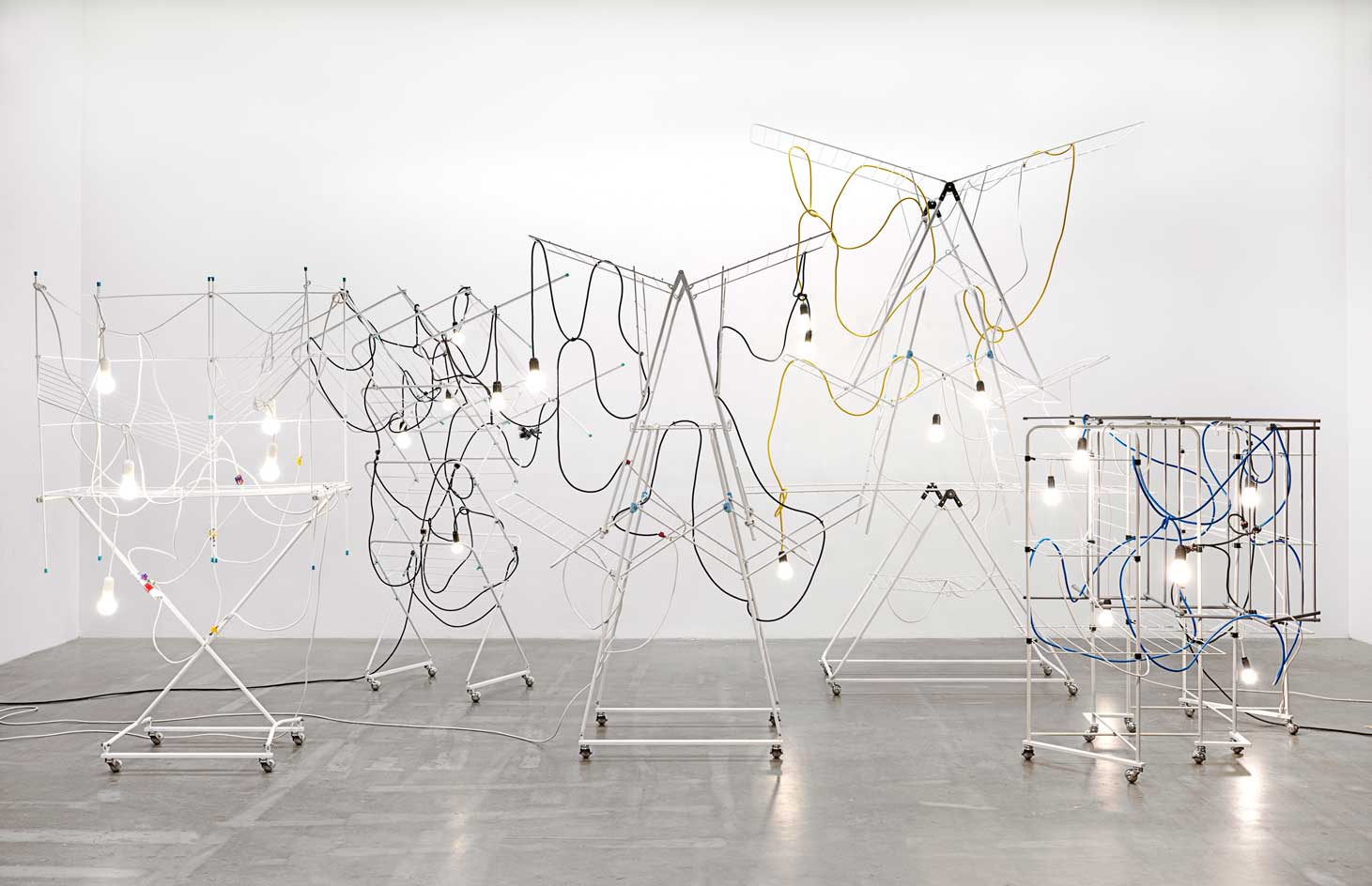
Non-Indépliables, nues 2010/2020. Courtesy of the artist;
Non-Indépliables, nues, comprises a series of laundry drying racks (a recurring motif of Yang’s) enveloped in winding electrical wiring, adorned with light bulbs and again, on wheels. This is a prime example of Yang’s ability to liberate domesticity from its conventional constraints and elevate everyday household objects to new heights.
Yang also takes Cornwall’s landscape ancient architectural heritage as muses, namely the church of St Senara. In Mundus Cushions – Yielding X, Yang puts her own spin on traditional church kneelers, in a series of eight hand-crafted cushions on a raised plywood pew. Here, Yang extracts traditional religious symbolism and abstracts it into her new blend of sacred and secular. ‘During my site-visits to St Ives, I felt so exposed to nature and the local cultural and sacred landscapes of the region. Sentimental, melancholic, even romantic feelings overwhelmed me, which I channelled into the new works within the show,’ Yang reflects. Non-Linear and Non-Periodic Dynamics, a new wallpaper piece, channels Cornwall's temperamental natural elements. ‘The images in the exhibition reference the windy, foggy and wet weather of Cornwall and also the community traditions, beliefs and labour around water.’
The show demonstrates Yang’s knack for combining industrially-produced objects and labour-intensive craft with spirit and mystique. This is an exploration of postmodernism, and Tate St Ives’ long and deep-rooted relationship with it. It’s open-ended: the deeper you probe, the less clear things become, but intrigue is Yang’s stock-in-trade. ‘Strange Attractors’ induces responses as eclectic as its creator’s influences: endearment, discomfort and as the title promises, a very strange attraction.
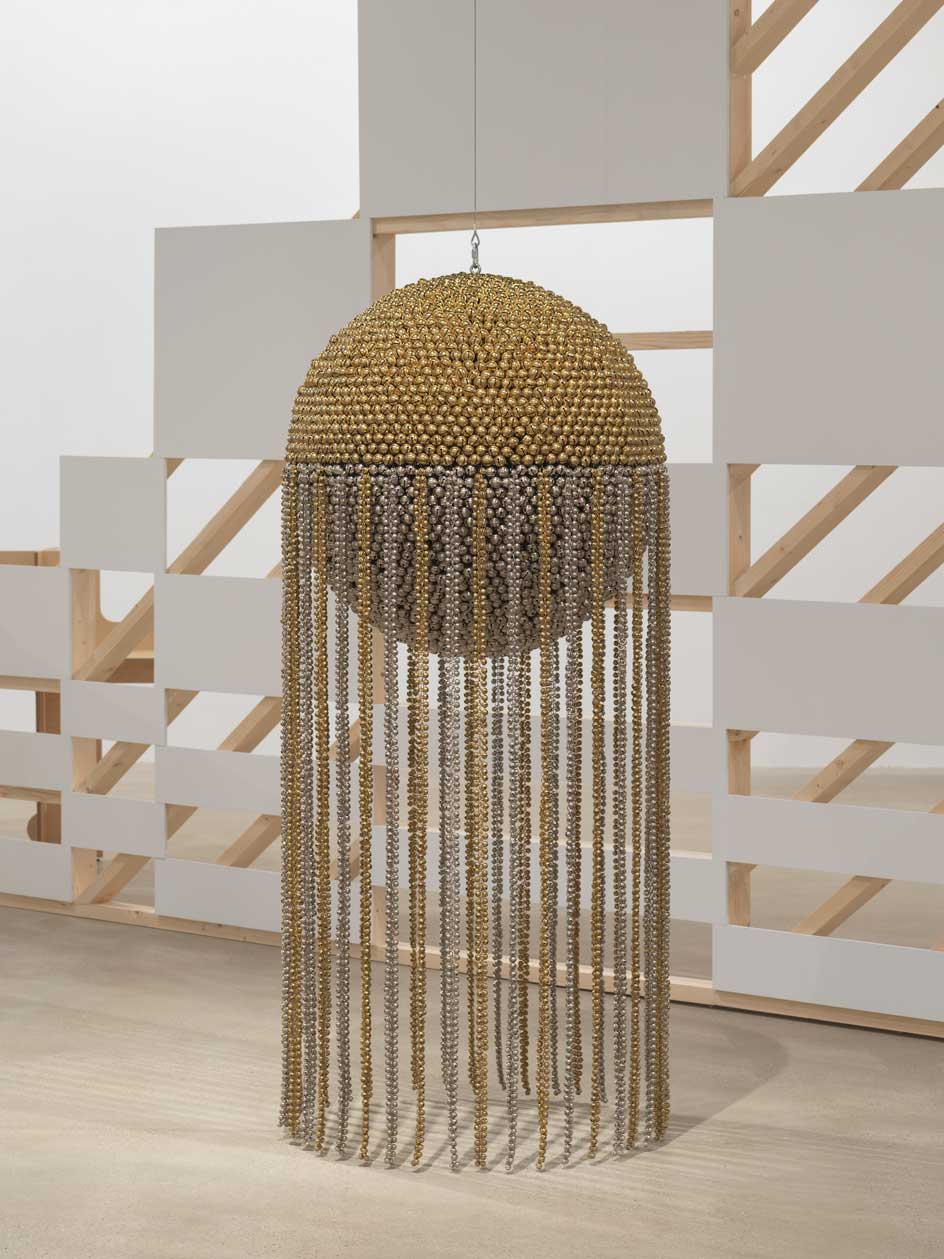
Installation view of Haegue Yang, Sonic Half Moon Type III – Large Light #21, 2014 at Tate St Ives, 2020.
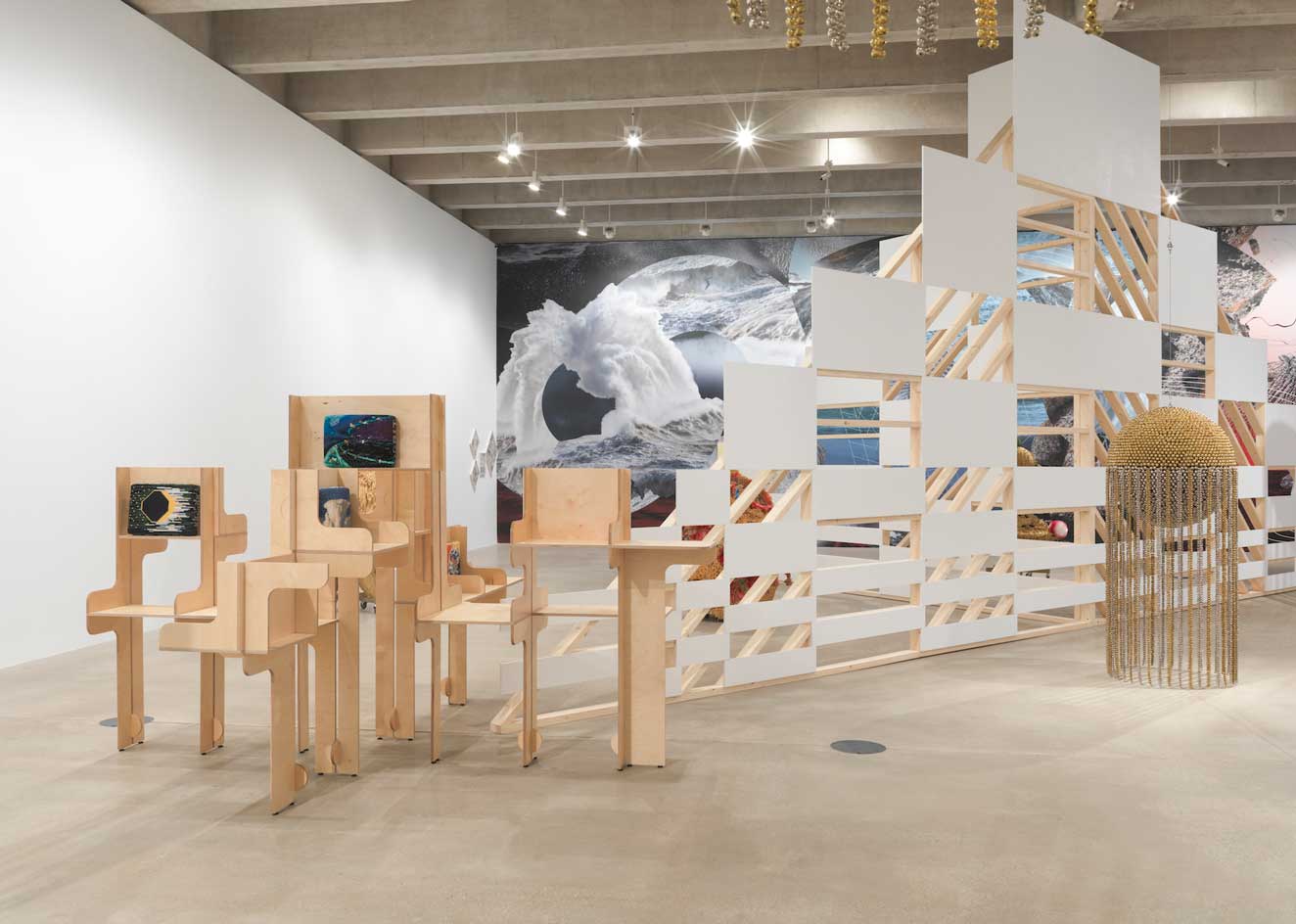
Installation view of ’Haegue Yang: Strange Attractors’ at Tate St Ives, 2020
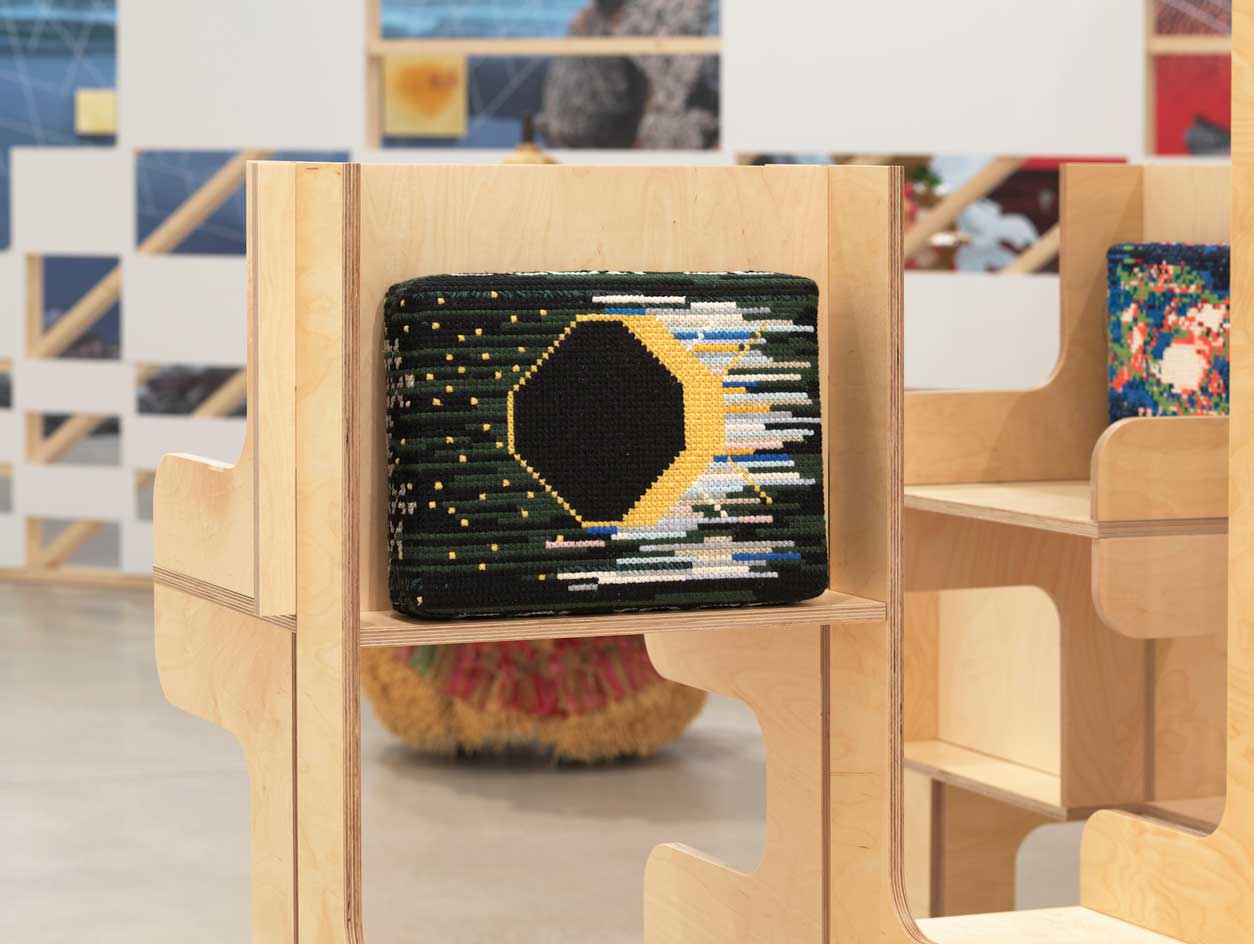
Installation view of Haegue Yang, Mundus Cushion - Yielding X, 2020 at Tate St Ives, 2020.
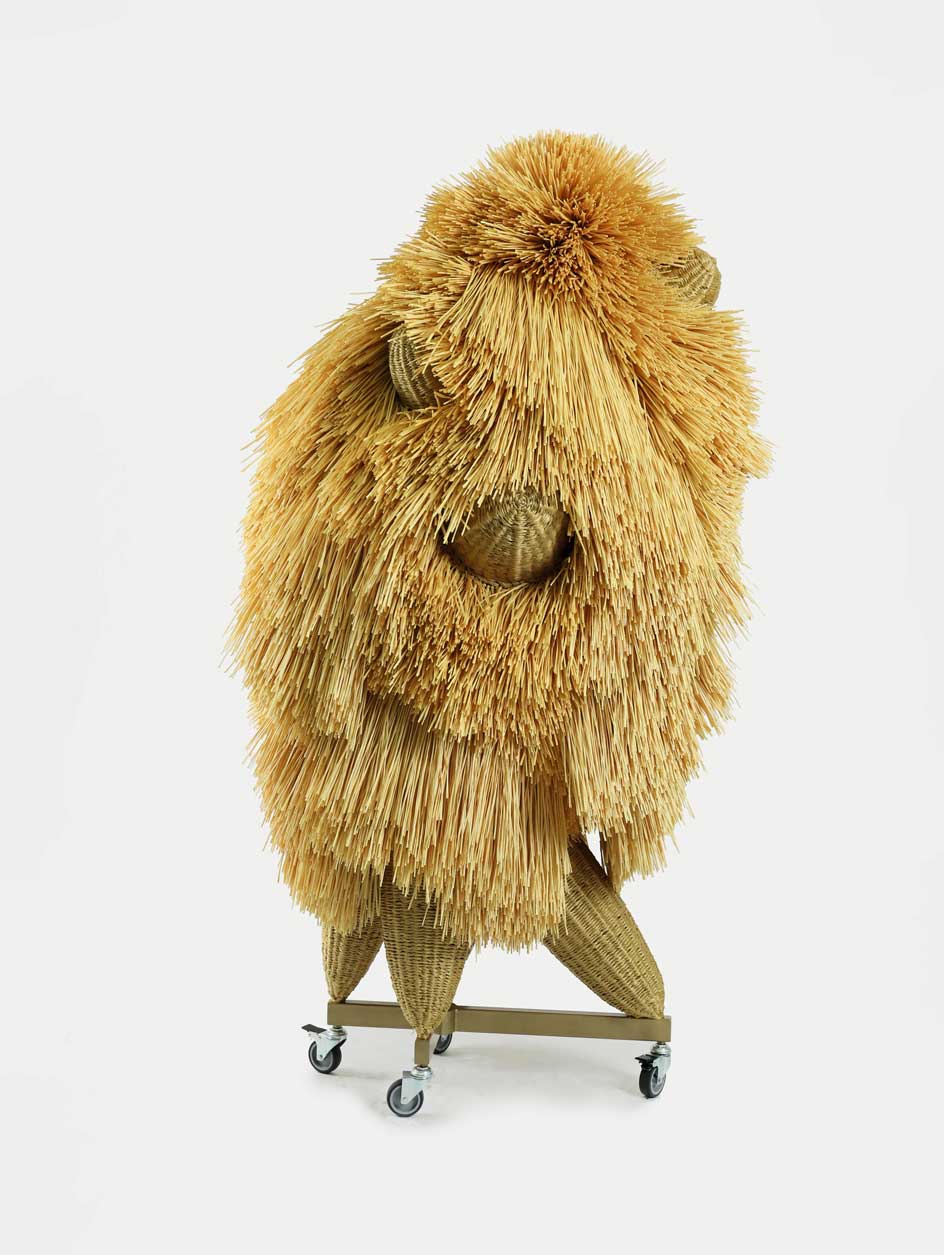
Haegue Yang, The Intermediate – Tilted Bushy Lumpy Bumpy
2016. Marc and Annette Kemmler Collection;

Haegue Yang, Non-Linear and Non-Periodic Dynamics, 2020.
INFORMATION
’Haegue Yang: Strange Attractors’, until 3 May 2021, Tate St Ives. tate.org.uk
ADDRESS
Tate St Ives
Porthmeor Beach
Saint Ives TR26 1TG
Receive our daily digest of inspiration, escapism and design stories from around the world direct to your inbox.
Harriet Lloyd-Smith was the Arts Editor of Wallpaper*, responsible for the art pages across digital and print, including profiles, exhibition reviews, and contemporary art collaborations. She started at Wallpaper* in 2017 and has written for leading contemporary art publications, auction houses and arts charities, and lectured on review writing and art journalism. When she’s not writing about art, she’s making her own.
-
 The White House faced the wrecking ball. Are these federal buildings next?
The White House faced the wrecking ball. Are these federal buildings next?Architects and preservationists weigh in on five buildings to watch in 2026, from brutalist icons to the 'Sistine Chapel' of New Deal art
-
 Georgia Kemball's jewellery has Dover Street Market's stamp of approval: discover it here
Georgia Kemball's jewellery has Dover Street Market's stamp of approval: discover it hereSelf-taught jeweller Georgia Kemball is inspired by fairytales for her whimsical jewellery
-
 The best way to see Mount Fuji? Book a stay here
The best way to see Mount Fuji? Book a stay hereAt the western foothills of Mount Fuji, Gora Kadan’s second property translates imperial heritage into a deeply immersive, design-led retreat
-
 Rolf Sachs’ largest exhibition to date, ‘Be-rühren’, is a playful study of touch
Rolf Sachs’ largest exhibition to date, ‘Be-rühren’, is a playful study of touchA collection of over 150 of Rolf Sachs’ works speaks to his preoccupation with transforming everyday objects to create art that is sensory – both emotionally and physically
-
 Architect Erin Besler is reframing the American tradition of barn raising
Architect Erin Besler is reframing the American tradition of barn raisingAt Art Omi sculpture and architecture park, NY, Besler turns barn raising into an inclusive project that challenges conventional notions of architecture
-
 What is recycling good for, asks Mika Rottenberg at Hauser & Wirth Menorca
What is recycling good for, asks Mika Rottenberg at Hauser & Wirth MenorcaUS-based artist Mika Rottenberg rethinks the possibilities of rubbish in a colourful exhibition, spanning films, drawings and eerily anthropomorphic lamps
-
 San Francisco’s controversial monument, the Vaillancourt Fountain, could be facing demolition
San Francisco’s controversial monument, the Vaillancourt Fountain, could be facing demolitionThe brutalist fountain is conspicuously absent from renders showing a redeveloped Embarcadero Plaza and people are unhappy about it, including the structure’s 95-year-old designer
-
 See the fruits of Niki de Saint Phalle and Jean Tinguely's creative and romantic union at Hauser & Wirth Somerset
See the fruits of Niki de Saint Phalle and Jean Tinguely's creative and romantic union at Hauser & Wirth SomersetAn intimate exhibition at Hauser & Wirth Somerset explores three decades of a creative partnership
-
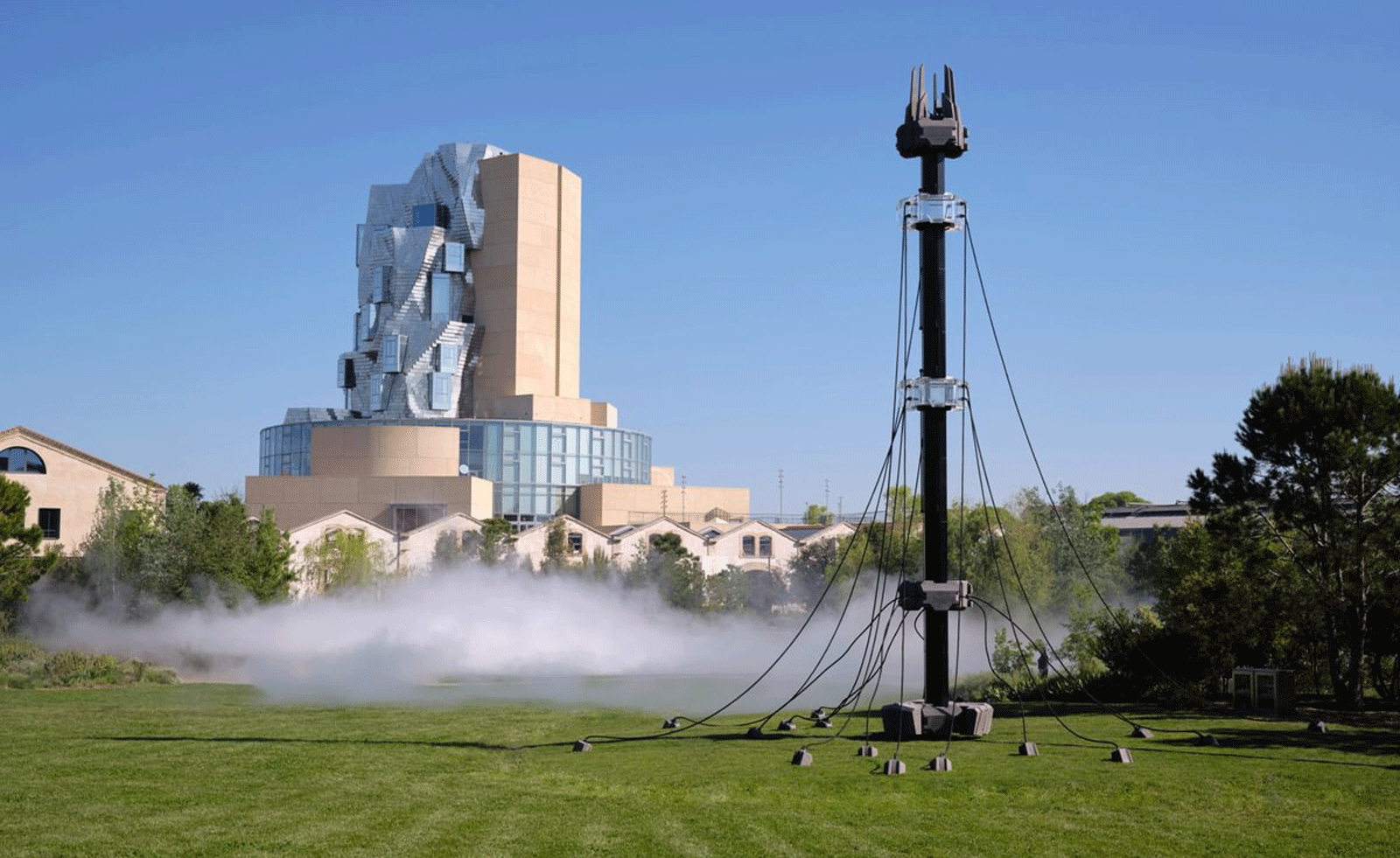 Technology, art and sculptures of fog: LUMA Arles kicks off the 2025/26 season
Technology, art and sculptures of fog: LUMA Arles kicks off the 2025/26 seasonThree different exhibitions at LUMA Arles, in France, delve into history in a celebration of all mediums; Amy Serafin went to explore
-
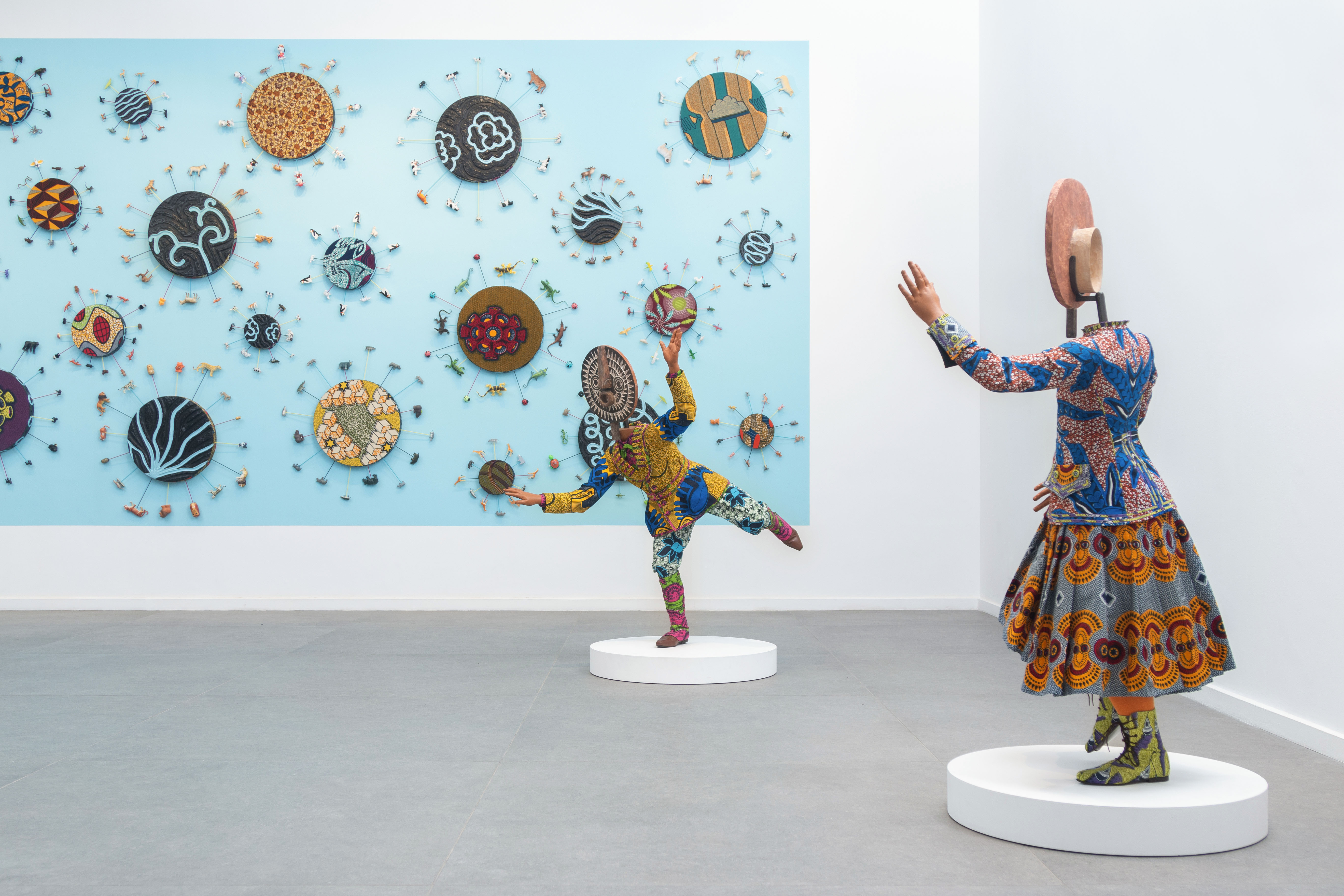 Inside Yinka Shonibare's first major show in Africa
Inside Yinka Shonibare's first major show in AfricaBritish-Nigerian artist Yinka Shonibare is showing 15 years of work, from quilts to sculptures, at Fondation H in Madagascar
-
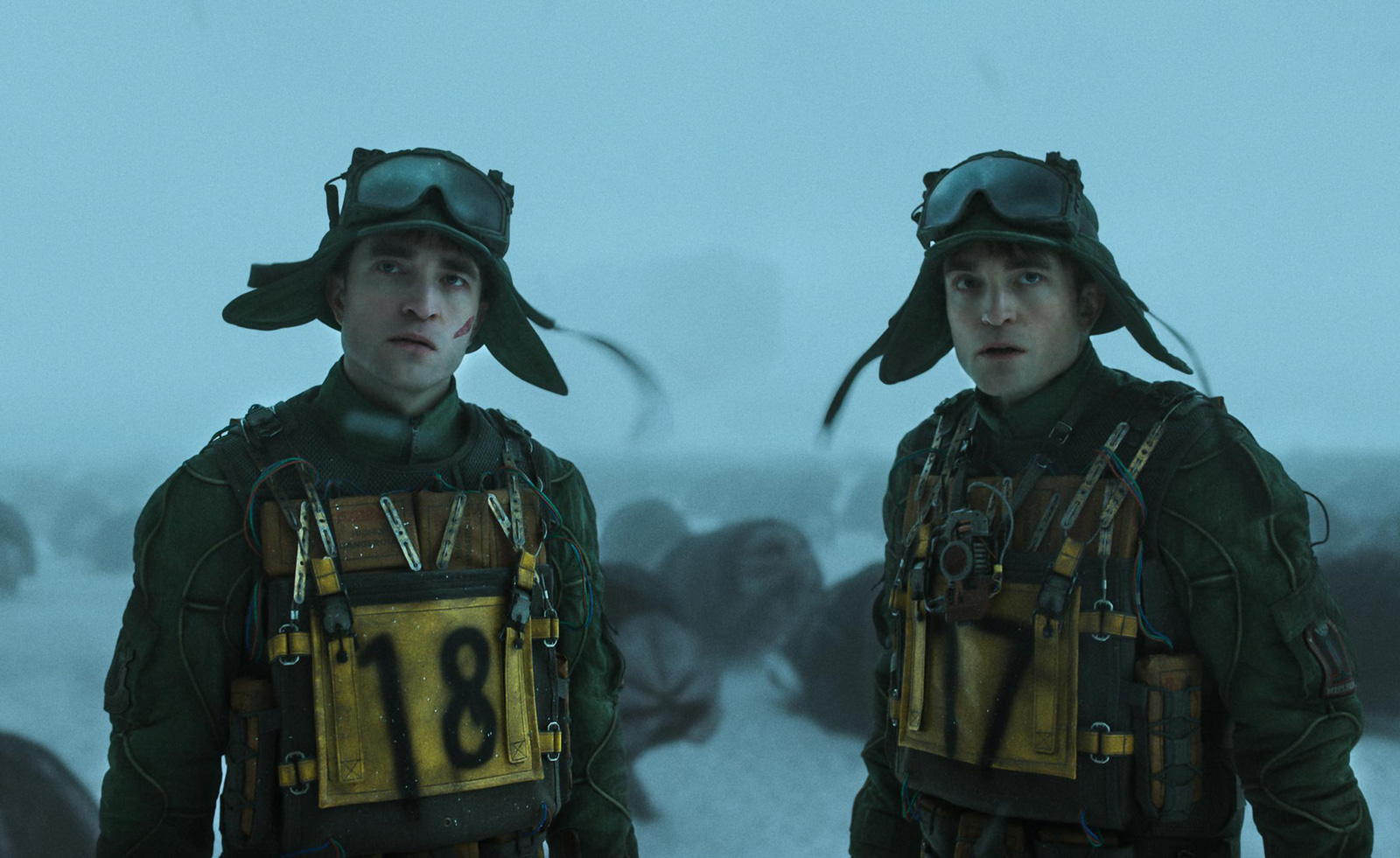 Bong on Bong: the Mickey 17 and Parasite director looks back on his career
Bong on Bong: the Mickey 17 and Parasite director looks back on his careerAs sci-fi romp Mickey 17 prepares to hit the big screen, Oscar-winning director Bong Joon Ho reflects on his career so far